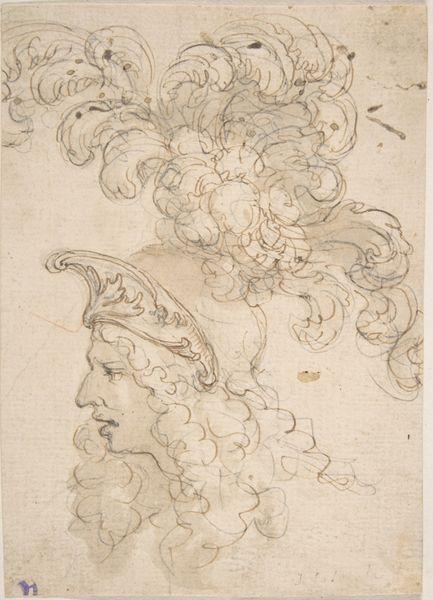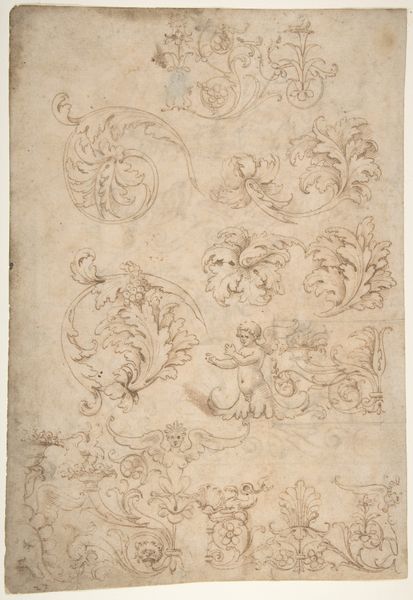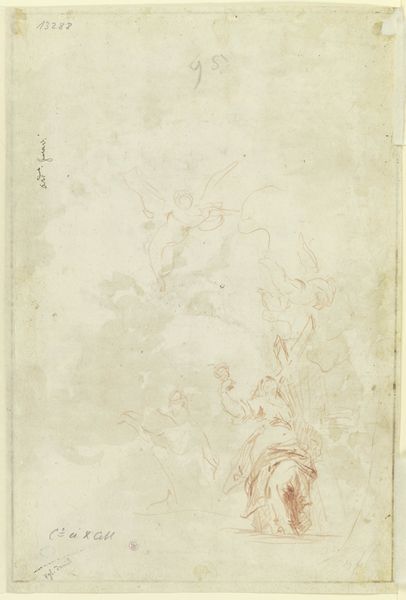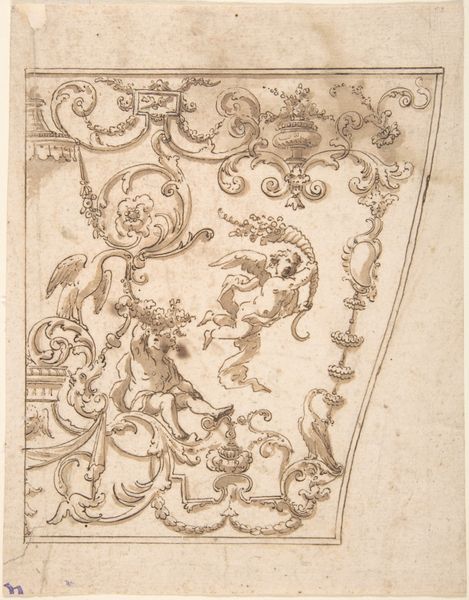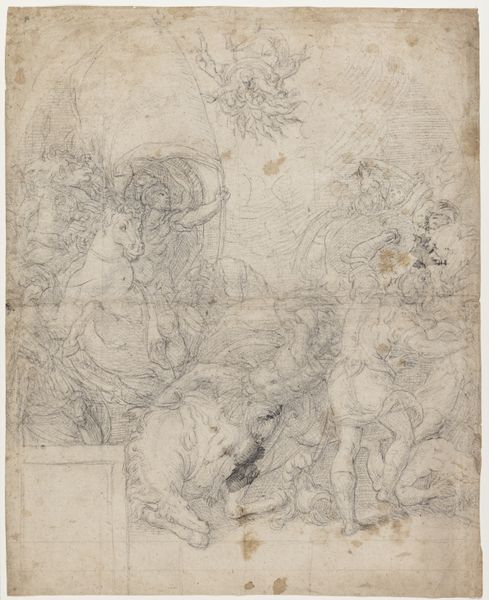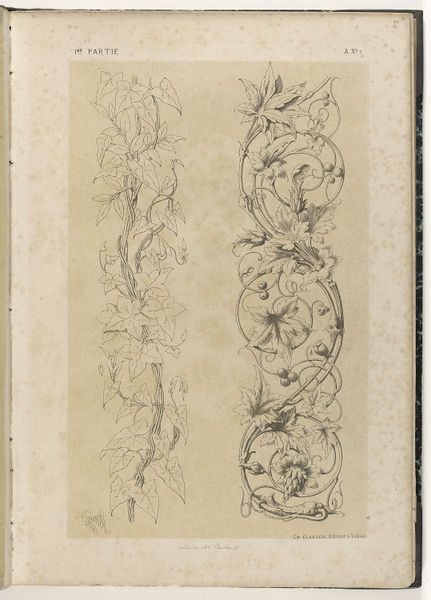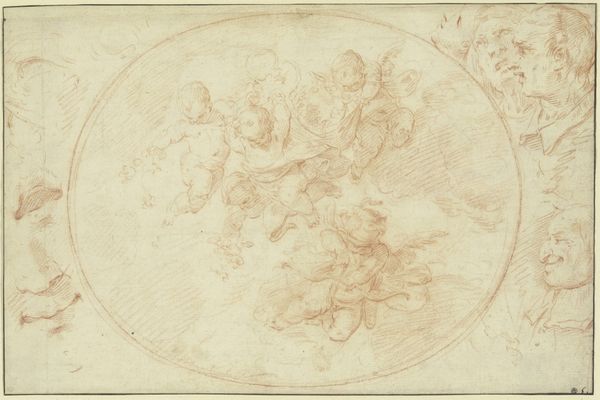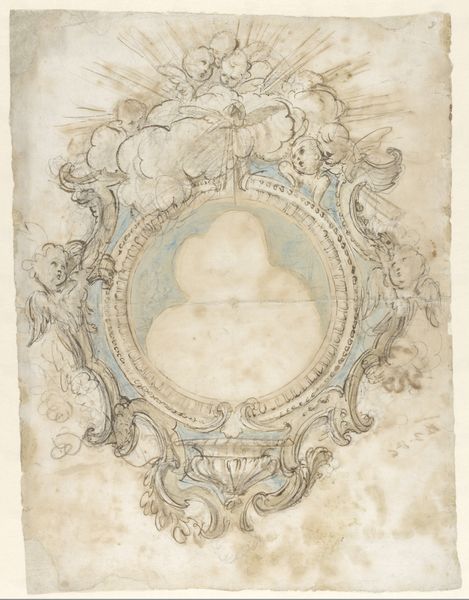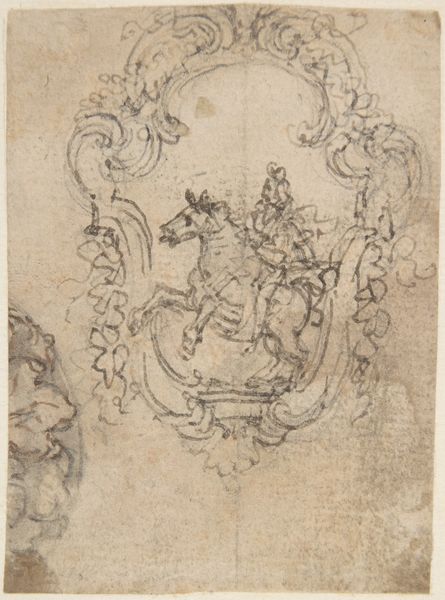
Design for a Ceiling Decoration: A Gathering of Mythological Figures (recto); Dancing Satyr and Two Seated Figures (verso) 1652 - 1726
0:00
0:00
drawing, print, paper, ink, pencil
#
drawing
#
allegory
#
baroque
# print
#
etching
#
figuration
#
paper
#
ink
#
pencil
#
history-painting
Dimensions: 14-3/16 x 11-11/16 in. (36.0 x 29.7 cm)
Copyright: Public Domain
Curator: Here we have "Design for a Ceiling Decoration: A Gathering of Mythological Figures" by Anton Domenico Gabbiani, created sometime between 1652 and 1726. It’s a drawing done in pencil, ink, and etching on paper. Editor: The circular composition gives me a feeling of swirling energy. It's quite ethereal and unfinished. Curator: Exactly. Gabbiani was likely preparing a study for a larger ceiling fresco, a popular commission during the Baroque era, especially in palatial settings. These mythological scenes were meant to impress, showcasing the patron's erudition and power. Editor: I’m drawn to the way Gabbiani uses line to create movement. Notice the dynamic positioning of the figures; they almost seem to be tumbling through space. The contrast between the delicate etching and bolder ink strokes is also compelling. Curator: The mythological figures would have resonated deeply with the educated elite. Depicting gods, heroes, and allegorical figures allowed for a layered communication of ideas, often linked to contemporary social and political events. Think about the iconography of warfare and peace. Editor: True. I also notice the composition creates a tension between the ordered arrangement and the frenetic energy of the figures themselves. Curator: That tension is so characteristic of the Baroque style—a dynamic push and pull between classical order and dramatic expression, perfectly mirroring the era’s socio-political climate, which strived to assert centralized power amid upheaval and change. The verso even contains another, more intimate study of figures! Editor: The interplay of light and shadow—achieved with such minimal means—gives a sculptural quality to the forms. Despite being a sketch, it conveys a rich sense of depth and volume. It’s remarkable how a few lines can suggest so much. Curator: Indeed. And beyond the aesthetic qualities, this work reminds us how art often functioned as a form of cultural currency. It reinforced established power structures and propagated certain values. Editor: Looking at it now, it really highlights how an artist can imbue even a preliminary sketch with such expressive power through line, composition, and contrast. Curator: And understanding that historical context can open us up to the meanings it conveyed at the time.
Comments
No comments
Be the first to comment and join the conversation on the ultimate creative platform.
